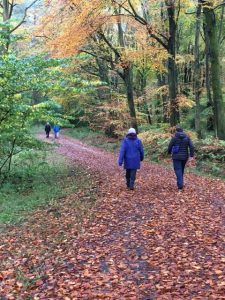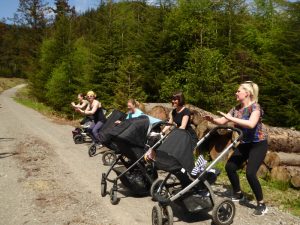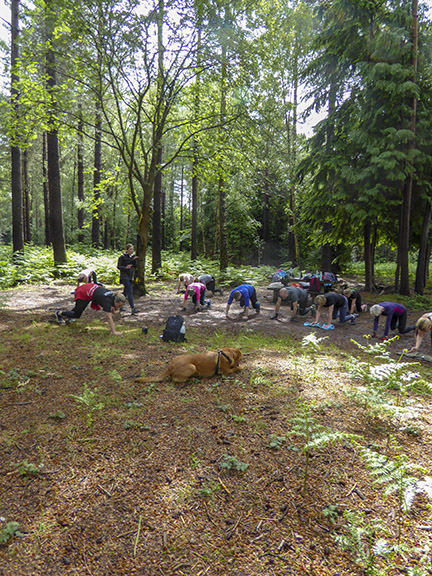The Active Forests Programme aims to create a physical activity habit for life for visitors to the nation’s forests in England. The programme provides engaging, inspirational and motivating physical activity opportunities for new and existing forest visitors. It is a partnership between Forestry England and Sport England.
The key aspects of the programme are delivered through: 1) working with a wide range of partners to deliver activities, 2) providing quality physical activity opportunities 3) working with partners to develop activities targeted at the less active and 4) monitoring and evaluation.
Report and papers from the Pilot Phase and Phase 2 of the evaluation can be found on the Reports and Publications page. Phase 2 of the Active Forests Programme took place on 18 Forestry England sites and ran for 5 years from 2017-2022. These sites include large scale forests in national parks right through to peri-urban forests.


Findings and Recommendations
Key Results from the Phase 2 Active Forests programme:
- There were a total of 4.66 million visits during phase 2 of the Active Forest programme, with the highest numbers for walking, running and cycling trail visits. Females made up an estimated 57% of visits. There were a total of 55,000 volunteer visits, totalling 118,000 hours, predominantly associated with parkrun/junior parkrun.
- Active Forest Coordinators (AFCs) were embedded at each of the 18 site and played a key role in the programme; thirteen AFCs have been made permanent members of Forestry England staff.
- Of those less active individuals who were surveyed (309 people doing 2.5 hours or less physical activity a week), 49% increased their physical activity after taking part in the Active Forests programme, a highly statistically significant increase. Of the remainder, 35% sustained their activity level and only 16% reduced their activity level.
- There were five benefits that received 95% or more positive survey responses: mental wellbeing benefits, a sense of fun and enjoyment, a feeling of escape and freedom, physical wellbeing benefits and feeling close to nature.
- The three key motivations for survey respondents were doing something physically active outdoors in nature, having fun and improving health (greater than 90% positive responses).
- The most important qualities of the forest sites to survey respondents were having a good choice of paths for physical activity and that the types of activity were fun and enjoyable (greater than 90% positive responses). Having fun was therefore a key aspect across all benefits, motivations and qualities.
- The wealth of survey data for the AF programme allows for predictions to be made of individuals’ activity levels by their traits and demographics. Those attending sites who took part in ball or shooting sports were least likely to be active individuals. Young women were notably less active than all other age and sex combinations.
- Aside from the forests and activities themselves, free text responses from respondents indicated that trails and having a positive and enjoyable experience were key selling points of the AF programme.
- Using quality adjusted life year (QALY) analysis, the estimated cost savings (versus medical interventions) for the final year of phase 2 was estimated to be approximately £3 million.
- The introduction of running trails at forest sites was estimated to increase running visits by 2,600 per quarter. The presence of parkrun at forest sites was associated with a quarterly increase of 2,800 visits and 275 volunteer visits.
- The AF programme saw a 5% increase in female visits across phase 2. Other upward trends were seen in older age groups, more deprived postcodes and those with an illness or impairment.
Latest updates
The main phase of the Active Forests programme ran from 2017 to 2022, after a pilot phase that ran from 2014-2017. Reports and publications from the main programme and pilot phase include published academic papers, qualitative case studies and a range of reports. 2022/23 is a Transition Phase for the Active Forests Programme before Phase 3 starts in 2023/24.
Our Involvement
Forest Research has led the monitoring and evaluation of the Active Forests Programme since 2014.



 Forestry England
Forestry England